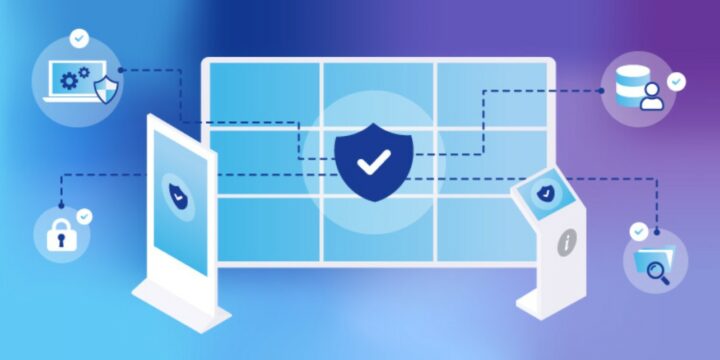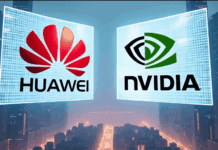Digital signs have provided a new way to reach audiences, whether that be in an airport or a shopping center, thanks to the best digital signage software available. However, this new type of media does raise a distinct concern: digital security. With new technologies and signs being in place, hackers have better chances of breaching personal data, gaining unauthorized content, or even shutting down a system entirely.

Hence, this article will detail the forms of cyber attacks that can be implemented throughout a digital sign network and how to handle them.
1. Digital Signage Networks’ Attack Surface
Each digital sign has more than one wireless connection, from media players to content management systems (CMS) and displays. Each new component can hold a new risk, which has the potential to be targeted by hackers looking to breach a system.
How the Threat Works:
Media Players. Attackers can use outdated operating systems to hack into media players, gaining access to legacy software with known weaknesses, allowing them to inject malicious codes into devices ports. Once inside, they can easily control the device and implement a virus.
Content Management System. Since CMS platforms are accessible from the web, they become convenient targets for brute force attempts, SQL injections, or session hijacking. If their authentication measures are not strict, hackers can hijack the system and alter content including the distribution of indecent or hateful materials.
Network Connections. Lack of encryption is apparent on almost all network communication among components. Attackers use techniques such as packet sniffing to intercept unsecured data, while others use MITM (man-in-the-middle) techniques to tamper and replace content on the fly.
2. The Risks from Malware and Ransomware Attack
Attackers can use malware or ransomware in a bid to halt operations, leak or steal sensitive data, or simply create a disturbance and demand a ransom.
How the Threat Works:
Drive-by Downloads. There are hackers who take control of websites or servers that appear more legitimate than the original one simply to obtain sensitive data. Whenever companies and media players seek content updates from the system’s websites, malware automatically installs itself without consent.
Phishing Emails. Sophisticated phishing attacks sent via emails are deeply targeted toward admins working on signage networks. Once the link or the attachment is clicked, the malware injects itself on the system.
Ransomware Attacks. Attackers place a lock over vital files on the system through encryption forcing the user to pay a ransom for its release. Since these attacks penetrate through unprotected servers and other weaknesses in the system, they take advantage of systems with weak vulnerabilities.
3. Content Alteration and Unconsented Entry
One of the most dangerous manipulations is the possibility of unconsented changes of the content, which might lead to the alteration of a reputation or harmful content being accessible to the general public.
How the Threat Works:
Weak CMS Passwords. A large number of content management systems are hacked due to weakly programmed or reused passwords. Attackers use automated programs to break the passwords and gain access.
Physical Access Exploitation. USB users or other means are able to hijack public digital multimedia players to upload malicious content or change the programming files themselves.
Remote Exploitation. Handler programs are a weak point, as they can be exploited to take over the entire system and spam the altered imagery all over the city’s video screens.
4. Loss of Data and Publicly Sensitive Information
Digital signage connects quite a number of devices, and some of these devices get and process data, such as how many people used the device which is analyzed by software and can be the scope of attack.
How the Threat Works:
Unencrypted Storage. Media players or their content management systems have quite a lot of unprotected data that are easily obtainable to everyone. If the so-called hackers have access to the media players, they can extract the information and sell the sensitive data.
API Exploitation. As mentioned above, the content management systems have constant interactions with external services via the APIs, but the APIs are not adequately secured so they can be exploited-intercepted to extract sensitive data when in appeal to traditional servers.
5. Distributed Denial of Service (DDoS) Attacks
DDoS attacks use botnets and can easily render displays inoperable and cause outages in system networks of secure digital signage.
How the Threat Works:
Botnets. When a signage network’s CMS server is hit with an unparalleled quantity of traffic from IoT devices, bots, and computers under the command of attackers, the server tangles up and stops working.
Amplification Attacks. By taking advantage of exposed network protocols, attackers can raise the total of malicious traffic directed to the server, destroying the server’s ability to deal with genuine requests to the point of no return.
6. Insider Threats
Contemptive employees or contractors capable of causing great damage to secure digital signage systems can be one of the biggest threats to a business.
How the Threat Works:
Data Manipulation. With access to the CMS, an unfamiliar person can erase, change, or corrupt data critical to the operation of the system, making it non-functional or even causing catastrophic schedule content.
Credential Abuse. There is no doubt that an employee can provide their work account details to friends, which permits them to break into the security perimeter of the signage network.
Effective Cybersecurity Measures for Secure Digital Signage

Fighting against the threats with Information Technology tools and a more holistic approach must be taken with user information.
Conducting Regular Security Audits
These regular audits seek to find and mitigate as many security weaknesses in a digital signage network as possible. This global approach needs to include an evaluation of all devices: everything from user controls to network and application software that was used.
Penetration Testing: These types of attacks include SQL injections, cross site scripting (XSS), and broken APIs.Tests are done against the sensitive systems like media players, CMS, and other systems that allow connection to the business network and its components.
Vulnerability Scanning: These as well as other tools are capable of flagging potentially Vulnerable software but not limited to misconfiguration, default unprotected ports, and other weaknesses. Nessus and Qualys are aimed to provide a deeper look into network vulnerability.
Configuration Review: Flagging all malformed protocols, encryption policies, and network barriers as well as the supporting controls for non-deployed standards. These include firewall rule settings and preventing the opposite issue of indecorous settings standards.
Use of Secure Content Management Systems (CMS)
At the core of any secure digital signage network is the CMS, which handles system functions such as content delivery. This critical component should follow best security practices and be protected appropriately.
Secure Authentication Mechanisms: Strong password policies need to be implemented alongside multi-factor authentication to reduce the likelihood of unauthorized access.
Data Encryption: Media players must only receive data from the CMS that has been changed in order to prevent cheating, while TLS/SSL is used for encryption. Furthermore, sensitive information created in the CMS must be encrypted using AES-256.
Regular Updates and Patching: The CMS must be updated with existing security patch risks and feature enhancements continuously. New threats identified are often patched by CMS suppliers.
Role-Based Access Controls (RBAC): Set access limits according to specific roles and responsibilities in a way that minimizes risk exposure. For example, content creators should not have administrator rights.
Logging and Monitoring: Allow for custom/traditional logs to be created in the CMS unit to include login attempts, content edits, and logon permits. These logs can be analyzed for abnormal patterns by using monitoring applications like Splunk or ELK Stack.
Conclusion on Secure Digital Signage
The ease and adaptability of managing digital signage networks raises many issues from a cybersecurity perspective. By being conscious of the technical threat surfaces and how the threats would like to leverage them, businesses are able to put mitigation measures that are realistic. Businesses need to be constantly alert within the ever-evolving threat landscape.


















